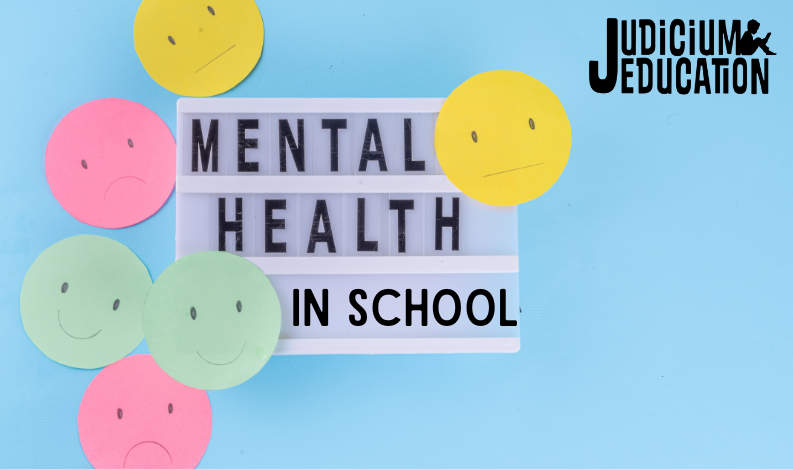Safeguarding Students When Using Alternative Provision

This blog is based on Judicium’s Safeguarding ‘Sofa Session’ from the 20th of April, with our resident expert James Simoniti. This session focused on Alternative Provision – what is it and why do we use it, your safeguarding responsibilities and common mistakes when using AP and key safeguarding takeaways for schools using AP.
What is Alternative Provision and why do we use it?
Alternative Provision can follow three forms:
- Education arranged by local authorities for pupils who, because of exclusion, illness or other reasons, would not otherwise receive suitable education.
- Education arranged by schools for pupils on a fixed period exclusion
- Pupils being directed by schools to off-site provision to improve their behaviour.
AP exists in many different formats. Some common types of AP include:
- Pupil Referral Units
- Vocational Provisions
- Animal-assisted therapeutic provisions
- Medical provisions
There are many more forms of AP, but many people do not realise that these are classified as AP.
If your school is already using something like the above, even if it is only for a few hours a week, it is essential to know it is a form of AP and as such is treated accordingly.
Why do schools use AP?
Alternative Provision may be a suitable alternative to permanent exclusion and its subsequent risks.
Safeguarding Practice Reviews frequently highlight the significance of permanent exclusion on a child and AP may be an appropriate way to mitigate these risks, while at the same time improving the behaviour of pupils.
If you do use AP to improve behaviour, there is clear legal guidance around what the governing body must do. NB: This is statutory guidance for Maintained schools but is an example of good practice for Academies to follow as well.
-
Ensure that parents and carers are given clear information about the placement.
-
Keep the placement under review.
What does good Alternative Provision look like?
It’s different for every pupil and thus should be geared towards their individual needs. Good AP for one pupil may be totally inadequate for another. The DfE guidance for Alternative Provision is a very helpful document and should be consulted if you are looking into using AP for the first time.
However, at the very least you should expect:
- Good academic achievement on par with mainstream schools, with appropriate qualifications
- The pupils should not be ‘written off’ and expectations lowered due to attending AP.
- AP should be a mechanism for such pupils to thrive.
- What accreditation will your pupils have when they leave AP?
- A focus on breaking down barriers to attainment
- How does the AP work towards addressing the specific needs of your pupils?
- How are these different to what your school can already offer?
- Improved confidence and engagement with education
- How does the provider plan to monitor this?
- Have they got a track record of improving the attendance of pupils?
- Defined objectives that the child can work towards
- Is the plan to reintegrate the child back into full time mainstream education?
- Or will they go onto further training or employment following the placement? Either way, this long-term strategy should be considered in the early stages of the placement.
- Look for the provider to be registered if they meet the legal requirement to do so
- AP providers are not always registered! And legally, they do not all need to be. Crucially, if they are not registered, they are not inspected.
- The provider needs to be registered if it provides full-time education for:
- 5 or more pupils of compulsory school age
- 1 or more pupils of compulsory school age with an EHCP
- 1 or more pupils of compulsory school age that are looked after by the local authority. You should ensure that if these requirements are met, the provider is registered accordingly.
Remember, although it may be suitable for some pupils, any use of unregistered provision is likely to bring increased scrutiny during any inspection.
What are your Safeguarding responsibilities and the most common mistakes made when using Alternative Provision?
It is vital to remember that when you send a child to AP, you are not handing over responsibility for the safeguarding of that pupil.
KCSIE is clear: “Where a school places a pupil with an alternative provision provider, the school continues to be responsible for the safeguarding of that pupil and should be satisfied that the provider meets the needs of the pupil.”
As the school, you retain responsibility for the safeguarding of that pupil. It is not solely down to the AP to safeguard them, and you need to work together to ensure that they are kept safe. The young people sent to AP are often some of the most vulnerable pupils at school, so schools need to be extra vigilant in ensuring their safety.
DfE guidance states that pupils should remain dual-registered when attending AP, even if they are attending AP for most or all their school day.
What must schools do ensure pupils in AP are safe?
According to KCSIE, schools must: Obtain, in writing, confirmation directly from the provider that safeguarding checks have been carried out on individuals that are working at the provision.
These checks would be the same ones you would expect to see on your SCR for your staff members – for example, an Enhanced DBS (with Barred List checks) for those conducting regulated activity at the provision.
You should have this written confirmation before any pupils begin attending. If the provision is not complying with this request, or if they cannot provide confirmation of these basic checks, can they really safeguard your pupils effectively?
We also suggest these further best practice safeguarding checks take place before agreeing to send pupils to AP.
1. Written confirmation of checks.You should know the location of your pupil every single day and have an agreed, established procedure to follow if the pupil does not attend the AP as expected.
4. Establish a contact plan.Outline when you will visit the pupil at the AP, how you will keep in touch with the provider and who will oversee contact with the child’s parents or carers.
What are the most common mistakes schools make when using AP?
When looking at the Ofsted reports where safeguarding at AP was criticised, four general themes emerge:
-
Lack of safeguarding checks on the providers.
-
Inadequate attendance procedures at the provision
-
Poor monitoring of pupils attending AP
-
Inadequate risk assessments of certain provisions
If you are in any doubt at all, speak to your safeguarding partner who can support you through the process.
5 Key Takeaways for Schools using Alternative Provision
1. Remember that YOU remain responsible for the safeguarding of pupils at Alternative Provision.
It is not simply the responsibility of the provider! You share the responsibility for the pupil and are expected to be confident in the safeguarding arrangements and have completed appropriate checks. Know which pupils attend AP, know which providers they attend and keep these lists up to date!
2. 1000 pupils at your school may be safe – but if a single pupil at AP is not safeguarded effectively, then this means nothing!
Pupils in AP are just as important, and any inspection will consider their safety too. It is not out of sight out of mind! Safeguarding has been labelled as ‘not effective’ solely down to AP on some occasions, so ensure that pupils at AP are considered just as much as pupils within the school building.
3. Don't take someone else's word for it...
Do your own checks on the provision and ensure that you have the written confirmation that checks have been completed on members of staff. Don’t trust a list of approved providers, as this may be out of date or totally unsuitable for your pupils. Check for yourselves and ask questions!
4. Carefully consider the use of part-time timetables.
These should only be used in exceptional situations, but if you must, ensure they are risk-assessed. Continually reassess pupils to see if they can return to a full-time timetable and subsequently move them to this ASAP.
For many pupils AP can be incredibly beneficial and using it well is a positive practice. Using our best practice plan, your school will be positive it is safeguarding its pupils in AP effectively.
DfE Attendance Guidance - https://assets.publishing.service.gov.uk/government/uploads/system/uploads/attachment_data/file/1039223/School_attendance_guidance_for_2021_to_2022_academic_year.pdf
You can follow the Safeguarding team on Twitter: @JudiciumSG
If you’d like to review Judicium’s forthcoming sofa sessions please click here
Related content

This is a summary taken from Judicium’s DPO ‘Sofa Session’ from 2nd of April, with Helen King and Sofia Mastrangelo. This session focused on the guidance on sharing safeguarding data and concerns, retention rules, and managing SARs in relation to safeguarding and considering exemptions.

This blog is based on Judicium’s Safeguarding & HR TRA and DBS referrals demystified ‘Sofa Session’ from the 29th January 2025, with our resident experts Sarah Cook and Jenny Salero.

In this blog, Helen King, Head of Safeguarding at Judicium Education shares her thoughts on the key trends that schools must look out for in 2025 and provides actionable advice and guidance in a Q&A style format.
.png)
This blog is based on Judicium’s Safeguarding ‘Sofa Session’ from the 27th November with our resident expert Joanne Bocko.

This blog is based on Judicium’s Safeguarding ‘Sofa Session’ from the 9th of October, with our resident experts Helen King and Jenny Salero.
.png)
This blog is based on Judicium’s Safeguarding ‘Sofa Session’ from the 11th September with our resident expert James Simoniti.


Sofa Sessions | Data Protection | Safeguarding